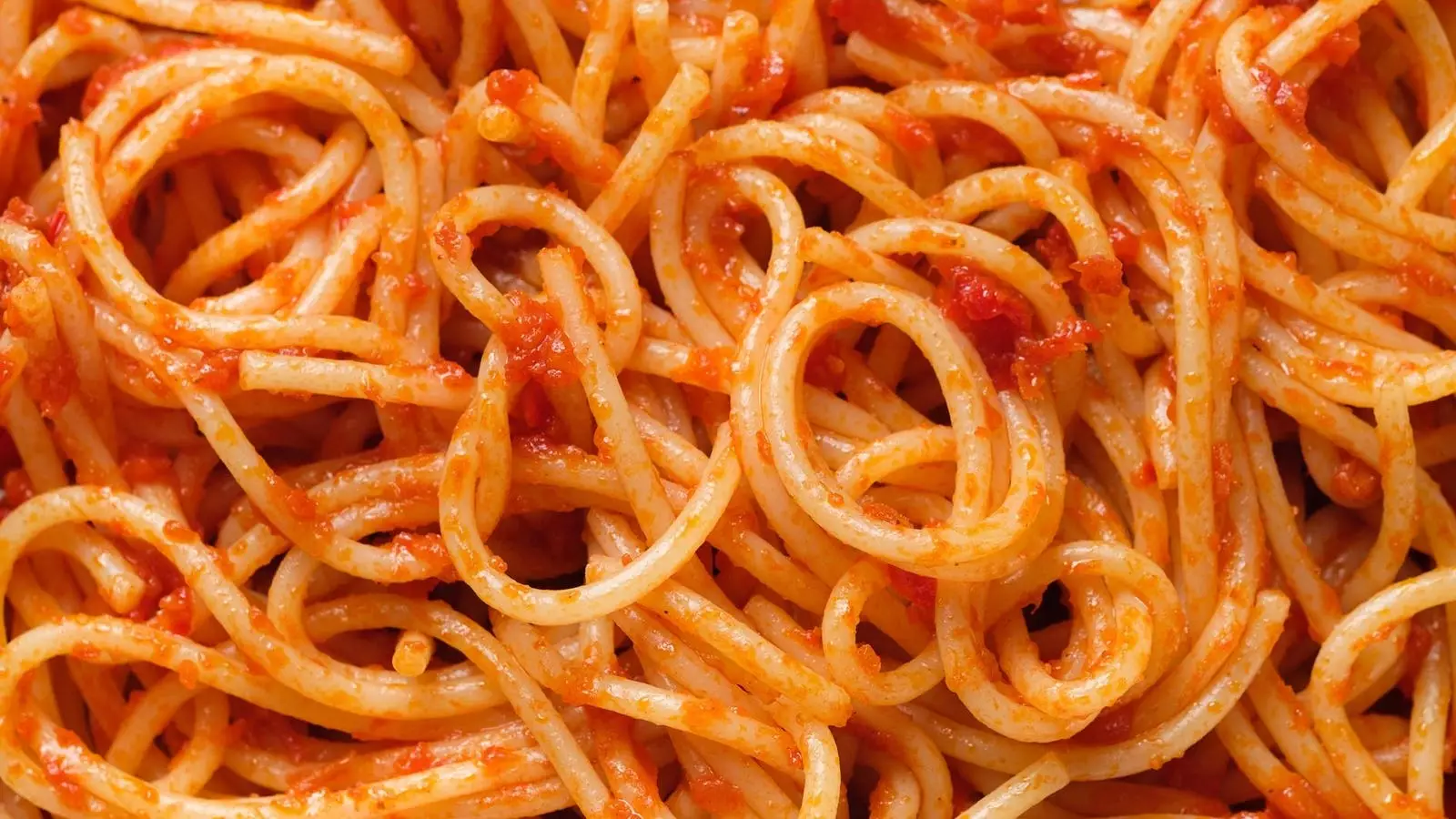A recent study has delved into the diverse sauce preferences across the United States, presenting a vivid mosaic of culinary tastes that varies significantly from one state to another. Conducted by Instacart, this research highlights the major players in the sauce market, showcasing which sauces dominate national sales and exposing the regional nuances that shape these preferences. With a growing number of restaurants and brands like Carbone throwing their hats into the jarred sauce ring, competition is fiercer than ever, driving innovation and variety in this staple of the American kitchen.
At the forefront of the findings is marinara sauce, which stands out as the unequivocal favorite among American consumers. According to Instacart’s data, this classic sauce accounts for a staggering 20% of all pasta sauce sales in the U.S. during 2024. Following closely behind is alfredo sauce, capturing 17% of sales, while tomato basil rounds out the trio of top sauces at 16%. This trend underscores a broader culinary truth: tomato-based sauces are entrenched in American dining preferences, resonating widely despite the country’s diverse palate.
Alex Orellana, Instacart’s Trends Analyst, emphasized the significance of these results, stating that “four out of the five most popular sauces are tomato-based,” which speaks to their timeless appeal. However, what lies beneath this love for marinara is a complex interplay of regional culinary traditions that influence purchasing decisions. While marinara reigns supreme in most areas, alfredo sauce enjoys particular popularity in specific regions, offering insight into the unique flavor profiles that different communities cherish.
The variations in sauce preferences across the nation reflect deeper cultural and culinary roots. For instance, the preference for spicy arrabbiata sauce is prevalent in New York, illustrating the state’s penchant for bold flavors. In contrast, Midwestern tastes lean towards hearty, slow-cooked sauces like bolognese, showcasing the comforting and robust flavors favored in that locale. Such distinctions highlight how local ingredients, traditions, and even historical influences shape the comfort foods that resonate with specific populations.
In crafting a culinary landscape, it is also important to recognize the less popular sauces. Pesto, meat sauce, and vodka sauce, while still significant, fall lower on the preference scale, with pesto capturing just 7% of sales and vodka sauce languishing in the shadows at 3%. Moreover, spicy sauces appear to struggle to gain traction, with arrabbiata, spicy tomato, and puttanesca languishing near the bottom of the rankings. This indicates not only the general preferences for milder sauces but also the challenges that spicier varieties face in reaching mainstream appeal.
Instacart’s data also sheds light on where sauce consumption is highest in the country. Iowans stand out as the most prolific consumers of pasta sauce, ordering it 49% more often than the national average. This pattern resonates throughout the Midwest and Northeast, with states such as Wisconsin, West Virginia, and Delaware showing notable trends of increased sauce purchases. The implications of these statistics suggest a strong cultural inclination towards hearty meals, where pasta sauce plays a central role.
Conversely, states like California, which orders 30% less pasta sauce on average, demonstrate the vast spectrum of culinary preferences that exist across the nation. Such discrepancies invite a reevaluation of food culture, hinting at lifestyle differences that lead to these significant variations in sauce consumption.
The exploration of sauce preferences via Instacart’s study encapsulates a broader narrative about American culinary culture. The enduring popularity of marinara, the regional flavor distinctions, and the varying levels of consumption all contribute to a rich tapestry that reflects not only individual taste but also collective cultural identity. As brands continue to innovate and introduce new varieties, it will be captivating to observe how these trends evolve in years to come, potentially reshaping the palate of the nation and rediscovering the comfort of flavors shared across the table.


Leave a Reply